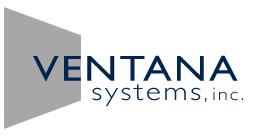Analytics and Modeling
In most cases, the term “analytics” refers to the statistical analysis of data for the purpose of discovering relationships between targeted variables, that is, to determine if and how they are correlated. The objective is to forecast the future state of an important targeted variable by discovering its correlation with another known or more predictable variable. This discovered mathematical relationship can be used as a simple forecasting “model.”
But correlation is not causality—any collection of data usually contains spurious correlations which look like causes, but aren’t. These spurious correlations lead to failed predictions, because they fail to find the causes of the target behavior. Causality is extremely important when the economic stakes are high and the relationships of interest are very complex. When trying to predict what a competitor, customer or partner will do under various circumstances, it is vital to be able to understand and test the why of any conclusions.
Because complex systems are dynamic (they change over time), and frequently nonlinear (results are not in proportion to drivers), they will not yield their important “whys” through standard statistical analysis of historical data. The right way to deal with complex systems is to capture and consolidate all known information about them in dynamic models.
Dynamic Models and Simulation
The fundamental premise underlying Ventana’s approach is that the behavior of a complex system is due primarily to the nature of the interconnections between the components of that system. While it is certainly true that any system’s behavior can be affected by unconnected or random events, most of the time its performance is determined by tangible physical and informational linkages.
A simulation model of the interrelated components of a complex system makes it possible to explore that system’s behavior under different environmental conditions, with different hypotheses about how participants (e.g. competitors, customers, and partners) will respond to different circumstances or events under alternative policies and strategies that might be employed. It amounts to a computerized scenario analysis, with the benefits of being replicable and quantifiable while generating specific, reliable information about possible outcomes.
How Our Approach Differs from AI and Neural Nets
“Big Data, AI, and Deep Learning” often imply the use of neural nets to recognize patterns in data. These neural-net approaches are excellent at finding patterns, but they offer little or no insight on what causes the patterns. In contrast, Ventana’s approach identifies the system that causes the behavior pattern. Our software makes it possible to reveal all the possible behaviors of that system (not just the patterns observed in the data), in order to discover what it would take to improve existing or threatened trajectories and change the behavior to the best-possible outcome.
How We Do It
Ventana technology can augment available historical data, in order to produce what-if and optimization guidance for the future. Ventana methods work when 1) business constraints aren’t in the data (a recommended action can have adverse effects on other parts of the business), 2) when important signals are not measured in the data (soft factors like time pressure, morale, or reputation can leave their imprint in the measurements, but without model structure to represent and estimate those important factors their impact on results can be muddled or missed altogether), 3) when operating outside the range of the data (e.g., understanding when historical performance improvements can’t be extrapolated), or 4) when rare or novel events might be important (disruptive events may not be present in the data).
We do not start with statistical analysis of data in a search for correlations that may (but usually don’t) indicate significant structural relationships. Instead, we begin by interviewing those with experience and knowledge about the system of interest. Their understanding of the significant variables and interrelationships is captured in a clear visual form that facilitates debate among these experts until they are comfortable with the representation of the system. This high-level representation is then converted into mathematical equations that can be run as a computer simulation.
The model is run and its behavior is compared to all the available qualitative and quantitative data about the system. Only after sufficient iterations and adjustments make the simulator’s behavior comparable to the data is the model considered “calibrated.” During the process, experts often refine and clarify their own understanding, and learn which data sources are most trustworthy. Once the calibration process is completed, the model is ready for exploration and prediction of future scenarios.
Dynamic Analytics: Measurement, Prediction, and Action
Measurements of customers or competitors must often be, in part, indirect. The available data might not reveal intentions, uncover vulnerabilities, or locate turning points in behavior. Dynamic models can be used to indirectly measure these crucial, hidden factors, making maximum use of available data. For example, prediction of a competitor requires knowledge of the causes of the competitor’s fate. A dynamic model is a good way to consolidate all knowledge about the competitor in one consistent framework. Important but unknown aspects of the competitor’s situation are well-estimated in the model, pinned down by the requirement that they be consistent with all available expertise and history. Simulation of the model will reveal the most likely future path of the competitor under different external conditions, and quantify the uncertainty of the forecasts.
The calibrated model makes it possible to test actions before taking them, predicting the likely responses of customers, competitors or both. The predictions reveal what actions, if any, will best stimulate customer response or drive competitors into a disadvantaged state. Measurement, prediction and well-informed action all become possible with a good dynamic model, coupled to available data. Good dynamic models arise from techniques and standards beyond what is usually called “analytics.”
